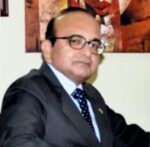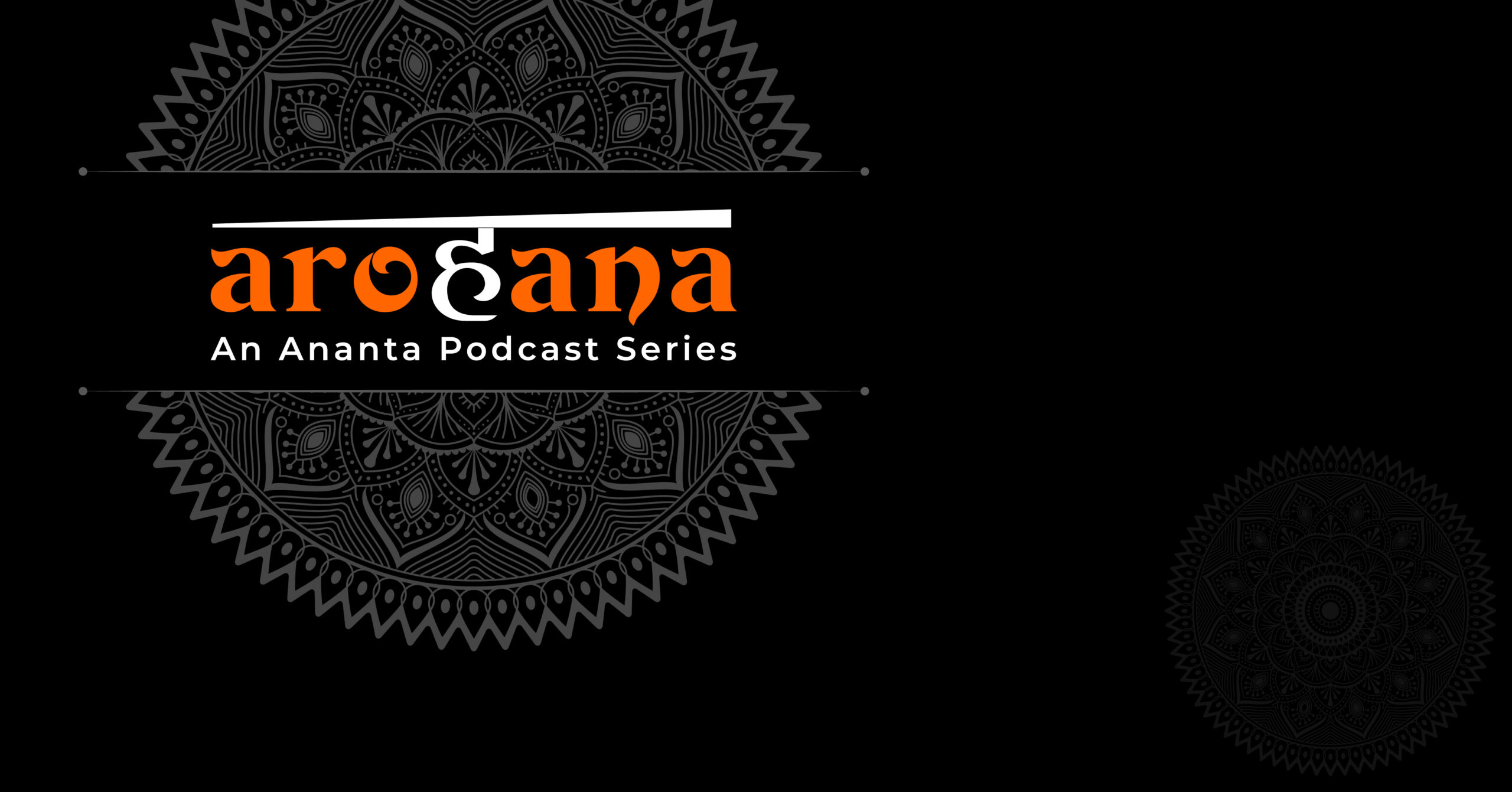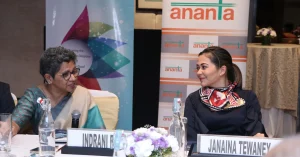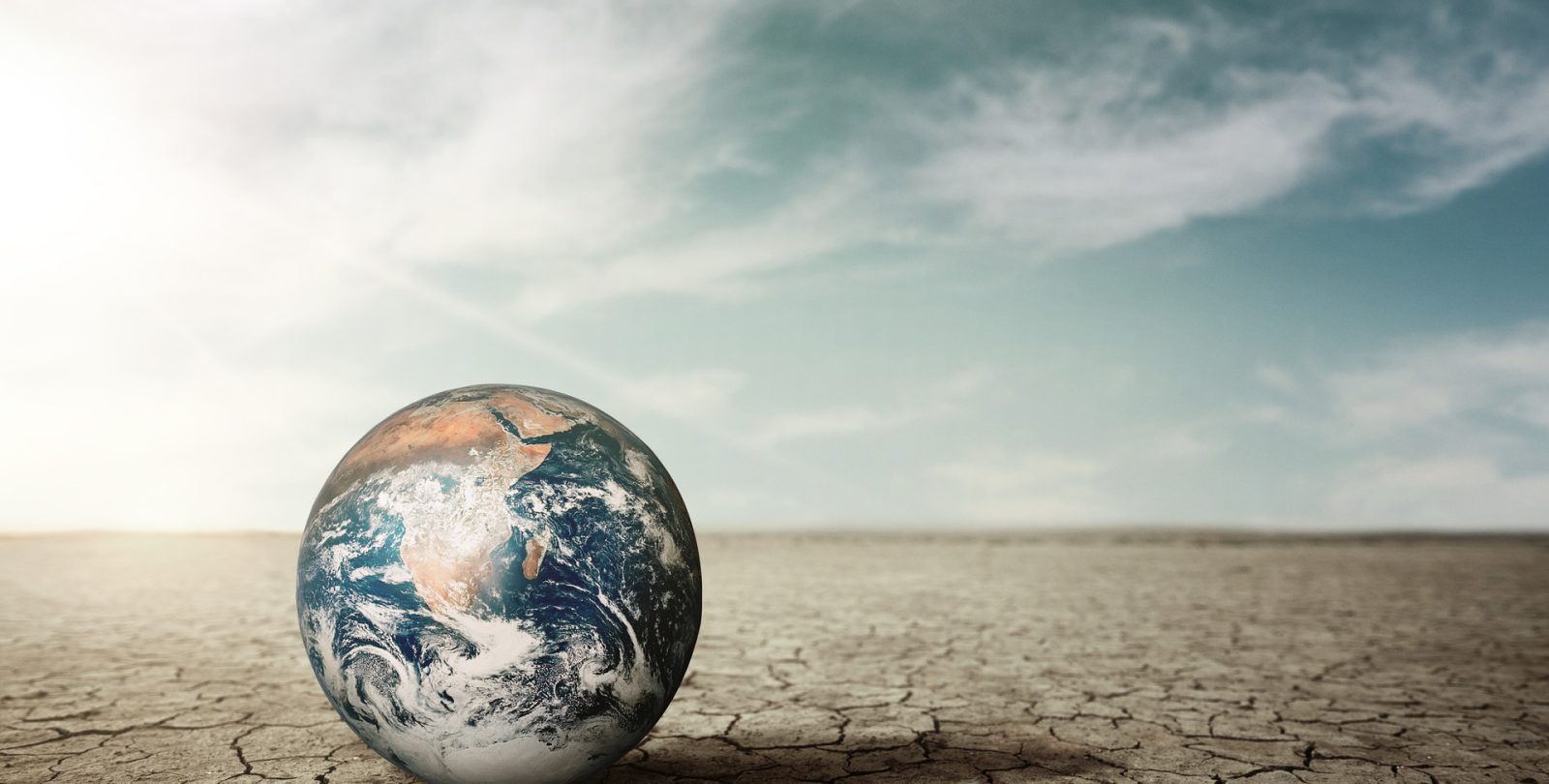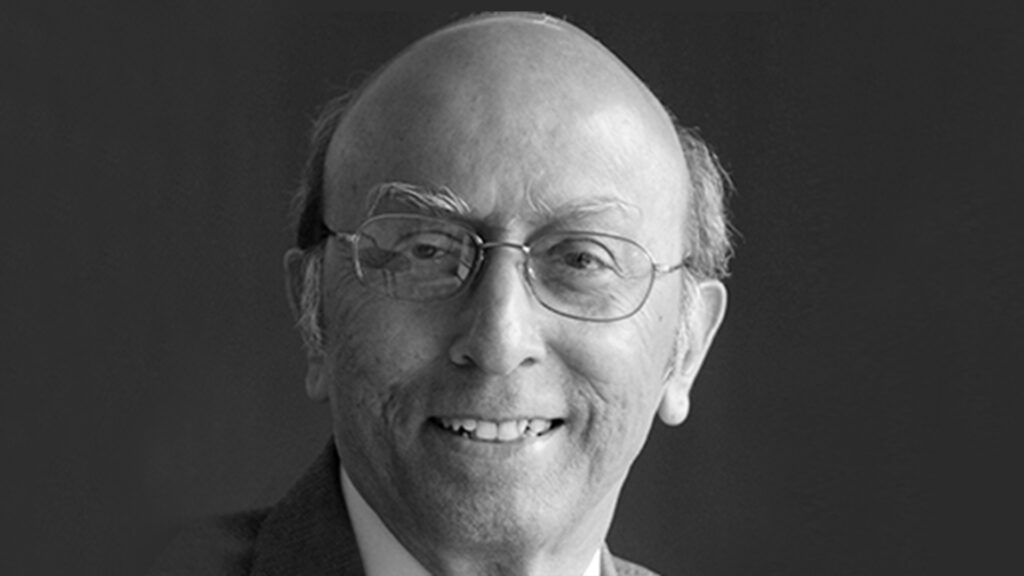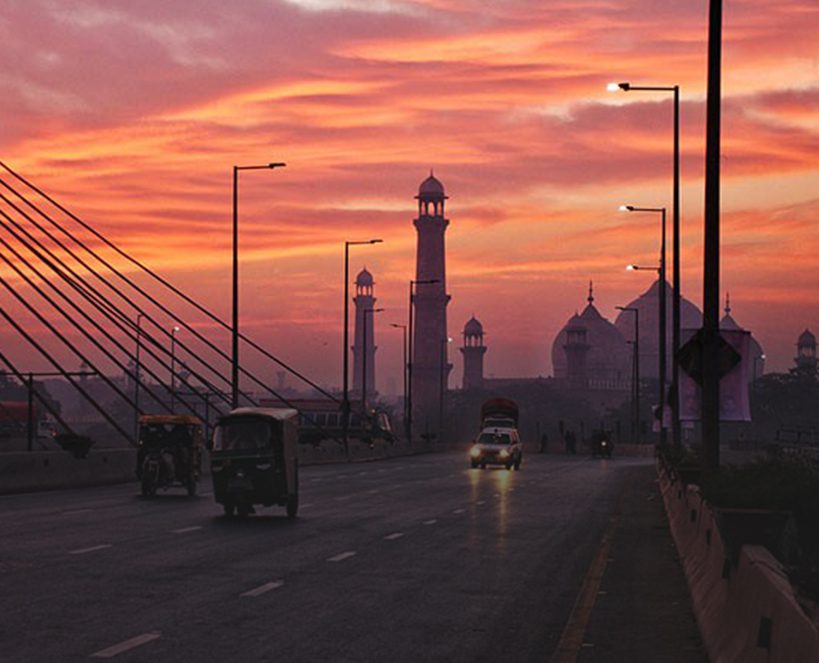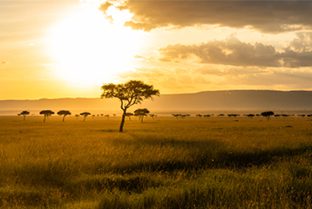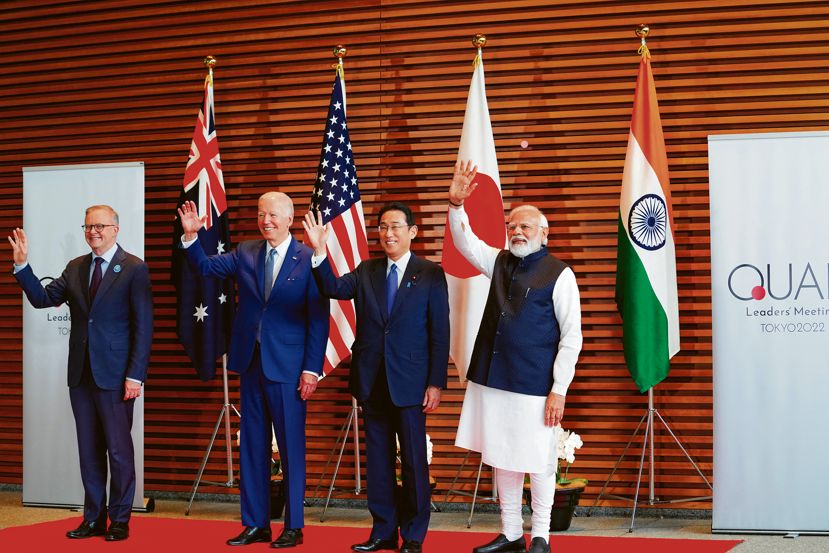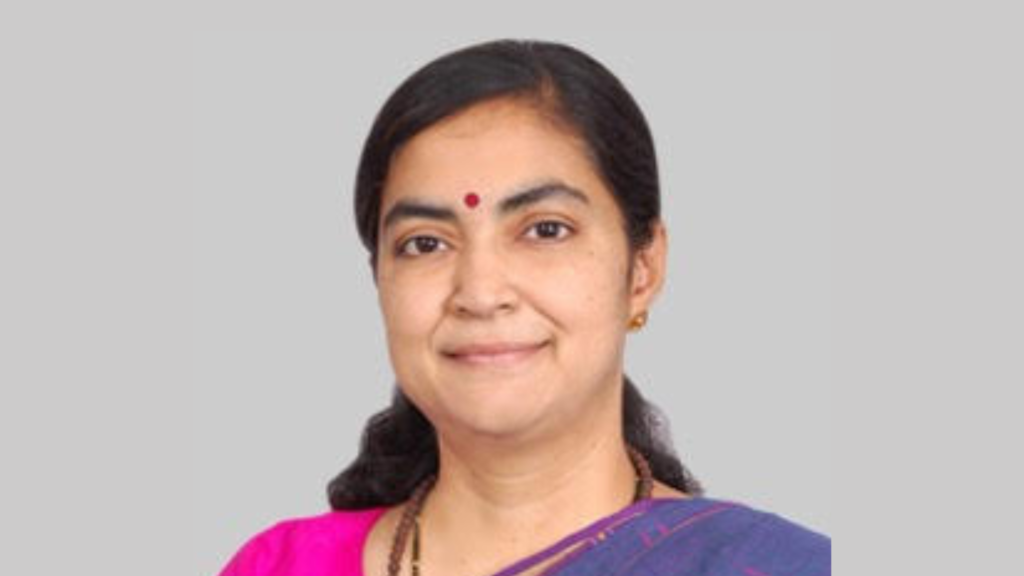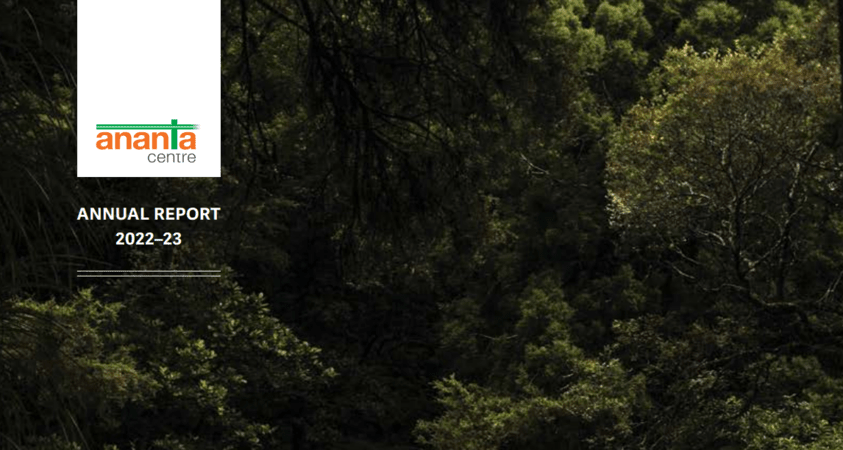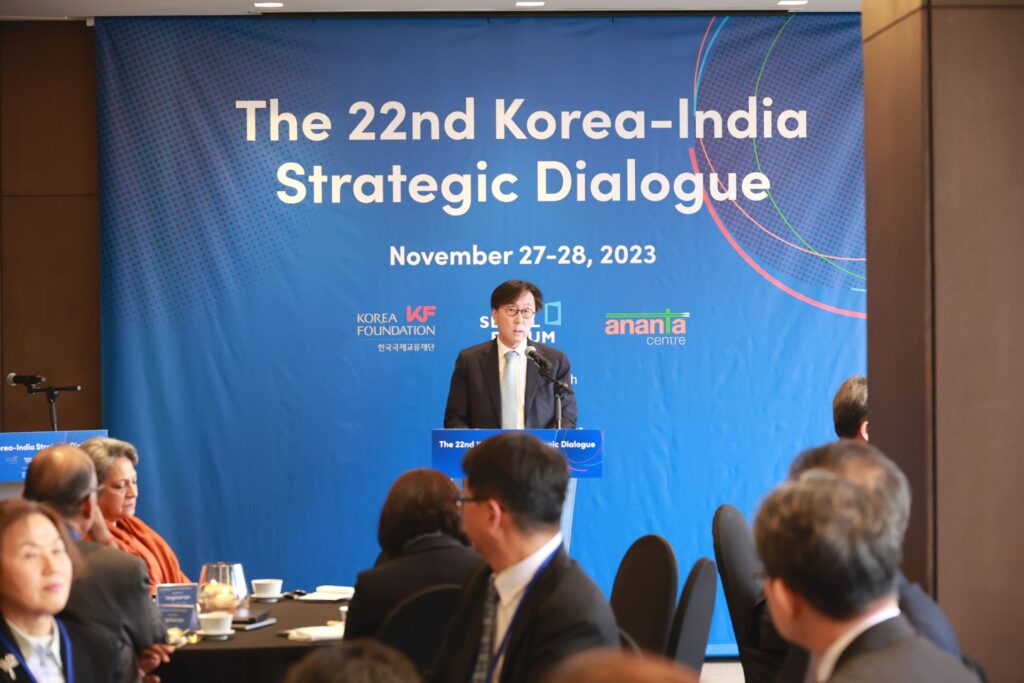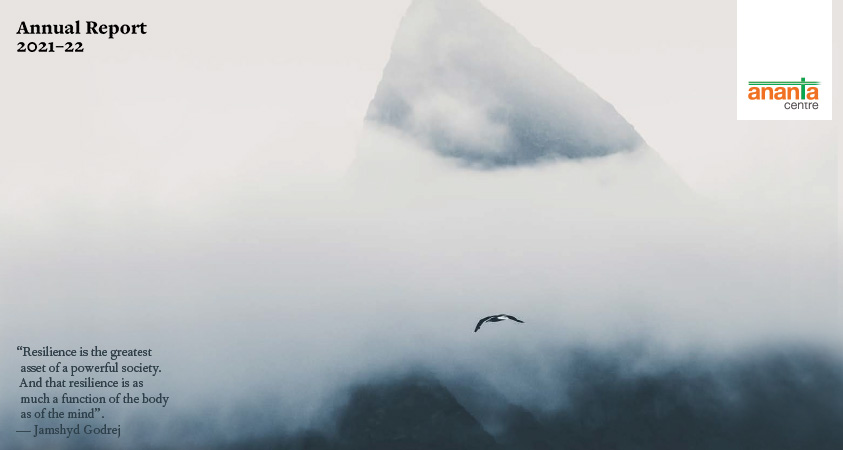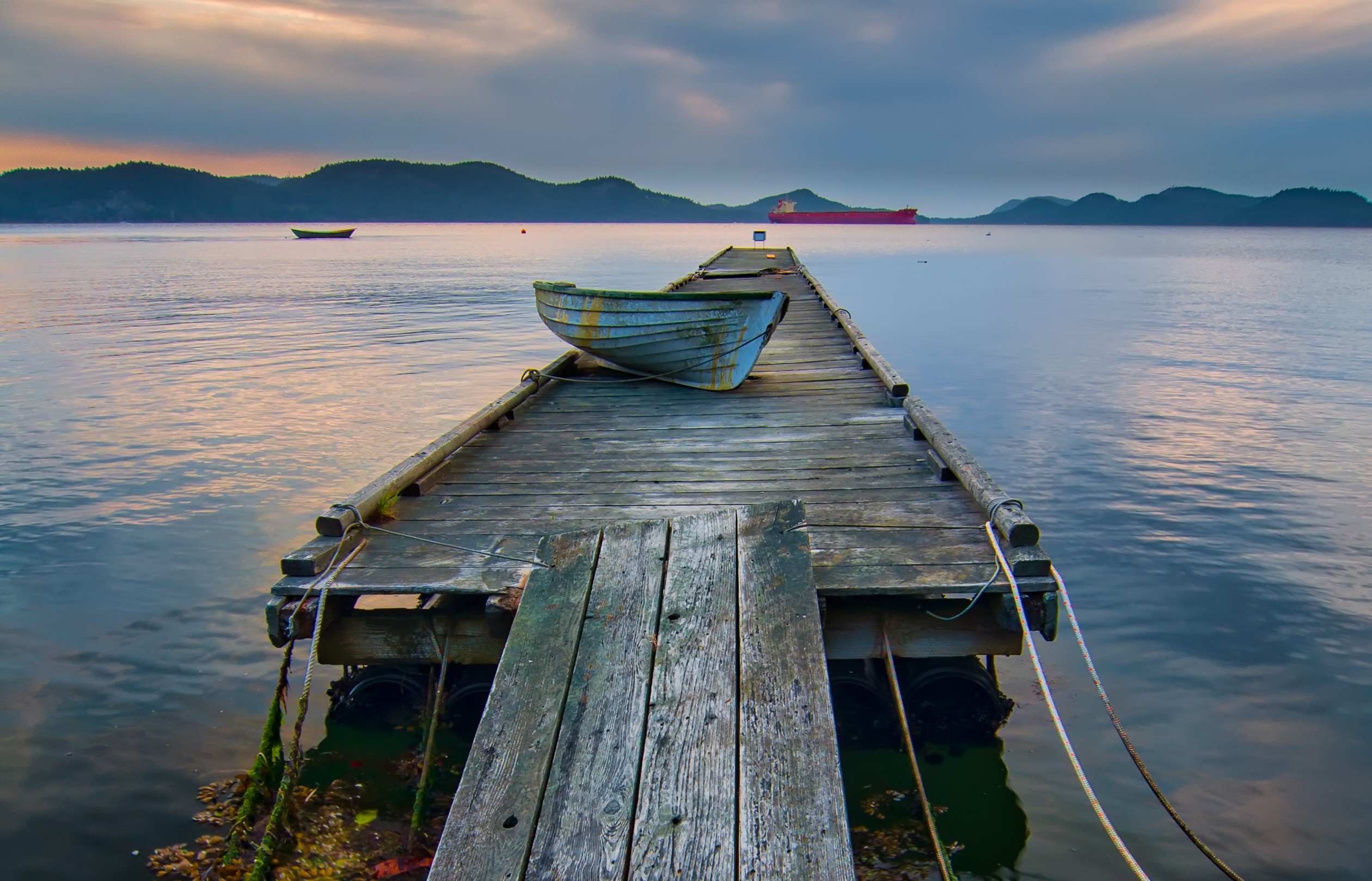IA) Political Developments: Pan-Regional and Global Issues
WANA Regional Security and Terrorism
During most of the month under review, the ferocious campaign by the Israel Defence Force (IDF) in Gaza against Hamas and Palestinian Islamic Jihad (PIJ) (“Operation Iron Swords”, or OIS) that began on Oct 8, continued. The only exception was during the Nov 23-30 period when an uneasy “pause” to remedy the desperate humanitarian situation and exchange hostages and prisoners. However, the 7-week-old OIS had not fully attained any of the three objectives, viz, exterminating Hamas, rescuing the hostages and demilitarising Gaza. It managed to kill several B-listers in Hamas and PIJ, but their top leadership continued to elude the IDF’s dragnet.
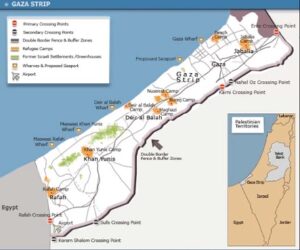
By the end of November, the asymmetric military confrontation in Gaza had lasted 50 days – far longer than any other high-intensity conflicts Israel had faced so far. However, it was still inconclusive, having created more heat than light for the combatants and seemed heading towards a protracted war of attrition. Israel’s single-minded pursuit of a military solution based on air raids and armoured thrusts managed to pulverise much of Gaza, an area less than a third of Delhi and an eighth of its population. The IDF’s ground campaign began on Oct 27 and was initially centred on northern Gaza. It commanded the residents to move to southern Gaza. By Nov 5, the IDF succeeded in slicing Gaza by half horizontally and surrounded the Gaza City. In the second phase of OIS, IDF focussed on the labyrinth of tunnels built by Hamas as the lynchpin of its survival strategy. Alleging that the main tunnel architecture was deliberately built by Hamas below Gaza’s premier hospitals, IDF disregarded the rules of war giving sanctity to these establishments. In particular, on Nov 13 IDF tanks surrounded al-Shifa Hospital, the largest in Gaza. While this caused an outcry, both regionally and globally, IDF persisted, but by the end of the month did not have any conclusive evidence to prove that a Hamas military command centre was burrowed under the hospital building. In going after tunnels, the IDF had to be cautious about many of the hostages being located there. Subsequent OIS actions in Gaza moved southwards and to more densely populated areas such as al-Jabaliya camp, Khan Younis and Rafah – requiring many of the northern refugees to move again.
OIS caused wanton destruction in the operational area with over 15,000 Gazans dead (mostly women and children) and more than half of residential units either destroyed or damaged by the end of November. Vast swathes of Gaza with over 2.3 mn people resembled Dresden at the end of WW2. With the near destruction of the basic infrastructure including hospitals, and denied supplies of essential medicines, foodstuff and fuel, the territory was spiralling down towards a full-fledged humanitarian disaster. (Further Reading: “As Gaza war rages, waiting for the other shoe to drop”, Mahesh Sachdev, The Hindu, Nov 16.)
Efforts by Qatar and Egypt succeeded in a four-day “humanitarian pause” in the Israel-Hamas war from Nov 23 which was later extended to 7 days. During this period, Hamas and PIJ released over 110 hostages – mostly women, children elderly and foreigners. In return, Israel released around 350 Palestinian women and children held in its jails. Israel also agreed to allow limited entry of humanitarian relief material from Egypt through the Rafah crossing.
Israel permitted the evacuations from Gaza through the Rafah crossing to Egypt from Nov 1. This was meant for an estimated 7,000 foreign passport holders, dual nationals and their dependents, and people needing urgent medical treatment.
The fighting in Gaza also etched up militancy along Israel’s border with Lebanon where powerful pro-Iran Hezbollah militia, a part of the “Axis of Resistance”, sporadically activated the front from Oct 8 onwards by firing rockets and artillery shells. While professing its disinterest in waging a distracting war along its northern border, Israel replied to Hezbollah in kind and also by air strikes. These exchanges raised the spectre of a repetition of their bloody and prolonged conflict in 2006. However, it was only on Nov 3, nearly a month into hostilities, that Hezbollah chief Syed Hassan Nasrallah gave his first TV address to his cadres. While condemning Israel and the US and praising Hamas, he carefully avoided any talk of escalation of hostilities. Echoing Iran’s call, he said, “We are calling on the Arab and Muslim states to cut off oil and gas and food supplies from Israel.” In his second address on Nov 11, too, while maintaining that Hezbollah had recently used new and more powerful weapons against Israel, he held back any declaration of a broader war. Observers cited several factors dragging Hezbollah’s offensive militancy against Israel this time. These included the ‘dog whistle’ from Iran currently intent on only a controlled escalation of the conflict, Hezbollah’s extensive commitment to Syria, Lebanon’s poor economic and political health, the decline in Hezbollah’s political sway in Lebanon and relatively heavy losses in current fighting so far with Israel. By Nov 16, more than 70 Hezbollah fighters and 10 civilians had been killed in Lebanon, as compared to 10 people including seven troops in Israel.
The hostilities in Gaza reverberated in the Occupied West Bank (OWB) as well where Hamas and PIJ have been ascendent as ruling Fatah, perceived as soft on Israeli occupation, lost ground. IDF, Shin Bet, other Israeli security agencies and the Jewish settlers in OWB sought to counter this trend through actions such as raids, arrests and collective punishments. As emotions flared on both sides after Oct 7, the confrontations have become more frequent, aggressive and violent. The skirmishes took place mainly in the hotbeds (“Lions’ Den”) of Palestinian militancy such as Jenin, Nablus, Ramallah, Tulkarm, pockets of East Jerusalem, etc. Between Oct 7 and Nov 30, at least 275 Palestinians died in the OWB in such incidents. Since the start of 2023, at least 483 Palestinians have been killed and more than 12,769 injured by Israeli forces and settlers in the OWB.
For details on the Houthi missile attacks on Israel and Red Sea area: Please see the para on Yemen.
WANA and Multilateral Diplomacy:
The continuation of the Israel-Hamas conflict and accompanying deaths and destruction during the month under review exposed the glaring marginalisation of the international security and humanitarian architecture. After four failed attempts, the United Nations Security Council finally adopted on Nov 15 the resolution 2712 demanding that all parties comply with their obligations under international law, including international humanitarian law, notably concerning the protection of civilians, especially children; It also called for urgent and extended humanitarian pauses and corridors throughout the Gaza Strip for a “sufficient number of days” and the immediate and unconditional release of all hostages held by Hamas and other groups. Even this aspirational resolution, with no mechanism to implement, was adopted with 12 votes in favour and the US, Russia and the UK, all veto-powered permanent members, abstaining. The UNSC’s stalemate was caused largely by the US insistence against a ceasefire in Gaza matched by some other members’ reluctance to specifically condemn Hamas for Oct 7 attack. On Nov 14, the Israeli foreign minister declared that the UN Secretary-General Antonio Guterres was “not fit to head the global body”, as he had not done enough to condemn militant group Hamas and was too close to Iran.
On Nov 13, the UN marked 101 deaths among its staff members, mostly from the UN Relief and Works Agency (UNRWA) in the Gaza conflict. UNICEF declared on Nov 23 that Gaza was “the most dangerous place in the world to be a child” with one death on average every ten minutes. On Nov 28, the WHO warned that untreated diseases could kill more people in Gaza than the bombings. The UN Office for the Coordination of Humanitarian Affairs (OCHA), said on Nov 17 that Israeli attacks had destroyed more than 41,000 housing units and damaged more than 222,000 housing units. In all, it said at least 45% of Gaza’s housing units had reportedly been damaged or destroyed. Two days before OCHA reported that 279 educational facilities had reportedly been damaged, more than 51% of the total, with none of Gaza’s 625,000 students able to access education. OCHA also said only 9 of Gaza’s 35 hospitals were partially functional with critical shortages reported of drugs and blood products. UNRWA stated that 70% of people in south Gaza did not have access to clean water. In 2023, Gaza’s GDP was expected to shrink by up to 12% due to the war. Both sides of the conflict asked the International Criminal Court (ICC) to rule on the alleged violations by the other side: ICC’s chief prosecutor visited Israel on Nov 30 to investigate Israeli allegations of sexual violence by Hamas fighters during the Oct 7 attack. On the other hand, on Nov 10, 3 Palestinian human rights groups asked the ICC to investigate the Israeli war crimes in Gaza. Israel continued to press the International Red Cross to visit the hostages held by Hamas. (Further Reading: “What war crimes laws apply to the Israel-Palestinian conflict?”, Reuters, Nov 16.)
Saudi Crown Prince and PM Mohammed bin Salman hosted an extraordinary combined Arab League and Organisation of Islamic Cooperation summit in Riyadh on Nov 11 to consider the ongoing conflict in Gaza. Dozens of leaders including Iranian President Ebrahim Raisi, Turkish President Tayyip Erdogan, Qatar’s Emir Sheikh Tamim bin Hamad Al Thani and Syrian President Bashar al-Assad attended. President Raisi, the first Iranian President to visit the Kingdom in more than a decade, hailed the Palestinian Islamist militant group Hamas for fighting against Israel and urged Islamic countries to impose oil and goods sanctions on Israel. The final declaration of the summit called for an immediate end to military operations in Gaza, rejecting Israel’s justification of its actions against Palestinians as self-defence. It urged the International Criminal Court to investigate “war crimes and crimes against humanity that Israel is committing.” It also formed a 7-member committee to visit P-5 countries to press them for early cessation of hostilities by Israel. (Further Reading: “Joint Arab Islamic Extraordinary Summit Adopts Resolution on Israeli Aggression against the Palestinian People” Saudi Press Agency, Nov 12.)
On Nov 21, the BRICS group held a virtual summit hosted by South Africa to consider the Israel-Hamas conflict. It was a first-of-its-kind meeting for a group that had previously focused only on economic issues. While it did not issue a final communique, the Chair’s summary included hardline references against Israeli actions. It “reiterated that the forced transfer and deportation of Palestinians, whether inside Gaza or to neighbouring countries, constitute grave breaches of the Geneva conventions and war crimes and violations under International Humanitarian Law.” It also called for an end to Israel’s war on Gaza and for a cessation of hostilities on both sides to ease the rapidly deteriorating humanitarian crisis in Gaza. Relevant to note that South Africa has taken a more strident stand against Israeli aggression in Gaza leading to the withdrawal of their mutual ambassadors.
On Nov 10 Crown Prince and PM Mohammed bin Salman hosted a Saudi Arabia – Africa summit in Riyadh. It was participated by presidents of Nigeria, Kenya, Zambia, Djibouti and Mauritania, the prime ministers of Ethiopia and Niger, and the foreign minister of Egypt. The next day Nigerian information minister said that Saudi Arabia plans to provide “substantial” financial support for Nigeria’s foreign exchange reform process.
WANA and Ukraine Conflict:
On Nov 6, the European Union said that the UAE had assured that it would curb the re-export of sensitive goods to Russia. Bloomberg News reported on Nov 23 that the UAE is showing less appetite for sanctions-related risk for Russian money partly as it aims to get off the FATF grey list.
WANA and the United States:
The US continued to be deeply engaged in deeply engaged in dousing the fires in the WANA region stemming from the Gaza war. At the diplomatic level, it sought to pursue two contradictory objectives. It sought to ensure Israel’s operational freedom for continuing military campaigns in Gaza, the West Bank and Lebanon by stonewalling the growing demand for a ceasefire. On the other hand, Washington sought to assuage the Arab governments by making politically correct policy statements on the Israel-Palestine issue. Thus, President Joe Biden authored a comprehensive op-ed piece in the Washington Post on Nov 18 proposing a post-war framework on Gaza’s future. He reiterated “a two-state solution is the only way to ensure the long-term security of both the Israeli and Palestinian people.” He also laid down “There must be no forcible displacement of Palestinians from Gaza, no reoccupation, no siege or blockade, and no reduction in territory. And after this war is over, the voices of Palestinian people and their aspirations must be at the centre of post-crisis governance in Gaza.” He added, “Gaza and the West Bank should be reunited under a single governance structure, ultimately under a revitalized Palestinian Authority.” US secretary of state Anthony Blinken also echoed these dicta as he sought to nullify various Arab street conspiracy theories about Washington and Tel Aviv acting in concert to force a new “Naqba” on Gazans. He visited the region twice during the month pursuing the tactical aim of arranging a “humanitarian pause” in fighting and exchange of hostages with Palestinian prisoners in Israeli jails. To this end, he visited the region on Nov 3-7 and began his second visit on Nov 30. On each occasion, he began in Israel and then travelled to some Arab capitals. After stoutly defending Israel’s right to self-defence during the initial weeks, with a massive humanitarian tragedy unfolding, the US leadership began to nuance its narrative in a more equidistant manner by emphasising the need to avoid the disproportionate collateral damage to the Gazans and their properties. Thus, on Nov 20, US defence secretary Lloyd Austin said “Our expectation is Israelis conduct their operations in accordance with the law of armed conflict,” adding “…they must do everything, or should do everything, that they can to get humanitarian assistance in to the people in Gaza.” All this diplomatic shuffle did not dilute the Biden administration’s “unshakable” commitment to Israel’s security. Thus, when a Republican filibuster in Congress derailed funding for arming Israel, on Nov 26 President Biden sought to expand Israeli access to the US weapons stockpile. (Further Reading: “The U.S. won’t back down from the challenge of Putin and Hamas” by Joe Biden, Washington Post, Nov 18.)
WANA and China:
During Their summit in Woodside, California on Nov 15, US President Joe Biden sought to nudge Chinese President Xi Jinping to urge Iran to avoid taking any steps that could escalate Israel’s conflicts with its regional proxies.
The 7-member ministerial delegation formed at the Arab League-OIC summit in Riyadh on Nov 11 visited Beijing on Nov 20 to press for an end to the Gaza war and was received by Chinese foreign minister Wang Yi.
IB) Political Developments
Iran:
During the month under review, the Iranian leadership maintained a hardline against Israel for its invasion of Gaza, but kept an ostensible distance from the “Axis of Resistance.” Thus, on Nov 19 Supreme Leader Ali Khamenei called for “an Islamic oil and food embargo on Israel for a limited period.” He was also known to have received Ismail Haniyeh, the Qatar-based leader of the Hamas political wing in early November. Reuters reported on Nov 15 that during this meeting Iran’s supreme leader delivered a clear message to the head of Hamas: You gave us no warning of your Oct. 7 attack on Israel and we will not enter the war on your behalf. On Nov 20, Iran officially denied having any role in al-Houthi’s seizure of commercial shipping in the Red Sea. On Nov 22, Iranian foreign minister Hossein Amirabdollahian met Hezbollah leader Syed Hassan Nasrallah in Beirut. The minister warned that if the ceasefire does not hold, “the scope of the war will expand”.
A Bloomberg report on Nov 30 said that Saudi Arabia had offered substantial investment in Iran to prevent the Gaza war from spreading. It did not cite any sources. On the other hand, Bloomberg reported on Nov 7 that the US Navy had deployed the nuclear-powered USS Florida attack submarine to the Gulf region to deter Iran.
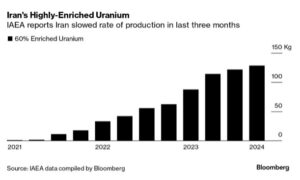 The Western media sources continue to report on various aspects of Iranian military and nuclear campaigns. Thus, on Nov 28 Reuters quoted the Iranian deputy defence minister as saying that Iran has finalised arrangements for the delivery of Russian-made Sukhoi Su-35 fighter jets, Mil Mi-28 attack helicopters, and Yak-130 jet trainers. On Nov 21, a White House spokesman warned that Iran may provide ballistic missiles to Russia. Reuters reported on Nov 13 that construction of a plant for mass production of Iran’s Shahed-136 “Kamikaze” drones was underway at Alabuga in Russia’s Tartarstan Republic. On Nov 19, Iran unveiled an upgraded version of its hypersonic missile titled Fattah II. Iran claims that Fattah is capable of moving at a speed of up to Mach 15 with a range of 1,400km. Bloomberg quoted IAEA on Nov 20 to say that Iran increased its stockpile of uranium enriched just below the level needed for nuclear weapons by 5% since September. Earlier on Nov 15, Reuters quoted “confidential” IAEA information to say that Iran has enough uranium enriched to up to 60% purity, close to weapons-grade, for three atom bombs as it continued to stonewall the agency on key issues.
The Western media sources continue to report on various aspects of Iranian military and nuclear campaigns. Thus, on Nov 28 Reuters quoted the Iranian deputy defence minister as saying that Iran has finalised arrangements for the delivery of Russian-made Sukhoi Su-35 fighter jets, Mil Mi-28 attack helicopters, and Yak-130 jet trainers. On Nov 21, a White House spokesman warned that Iran may provide ballistic missiles to Russia. Reuters reported on Nov 13 that construction of a plant for mass production of Iran’s Shahed-136 “Kamikaze” drones was underway at Alabuga in Russia’s Tartarstan Republic. On Nov 19, Iran unveiled an upgraded version of its hypersonic missile titled Fattah II. Iran claims that Fattah is capable of moving at a speed of up to Mach 15 with a range of 1,400km. Bloomberg quoted IAEA on Nov 20 to say that Iran increased its stockpile of uranium enriched just below the level needed for nuclear weapons by 5% since September. Earlier on Nov 15, Reuters quoted “confidential” IAEA information to say that Iran has enough uranium enriched to up to 60% purity, close to weapons-grade, for three atom bombs as it continued to stonewall the agency on key issues.
Iranian authorities hanged three Jaish al-Adl Sunni militants on Nov 13 in Sistan-Baluchistan province bordering Pakistan and Afghanistan for a suicide bombing in 2019 that killed 27 Revolutionary Guard members and wounded 13 others.
On Nov 6, imprisoned Iranian Nobel Peace Prize winner Narges Mohammadi began a hunger strike in protest against what she said was the jail’s failure to give her access to medical care.
Turkey:
On Nov 28, President Recep Tayyip Erdogan called for Israel to be tried at the international court for its war crimes in Gaza.
The US undersecretary of the treasury for terrorism and financial intelligence visited Turkey on Nov 30 to express deep concerns about Palestinian militant group Hamas raising funds in Turkey and potentially breaking local laws. Turkey, which does not view Hamas as a terrorist group and hosts some of its members, is one of the main bases for Hamas portfolio investments. He also asked Ankara to prevent the transfer of high-priority dual-use components to Russia, alleging that transit of such goods via Turkey had gone up sixfold in the last 18-24 months.
Even as Turkey continued to hint at approving Sweden’s bid to join NATO by the yearend, on Nov 16 parliament delayed the ratification proposal as members voiced reservations on the measures Stockholm has taken to address Turkish concerns. Meanwhile, the US and Canada continued to hang fire on Turkish demand for F-16 fighters and drone cameras, in an apparent bid to press Ankara to speed up the process. Turkey, in turn, began negotiating for acquiring Eurofighters.
On Nov 8, the European Commission issued its annual report on the status of Turkey’s accession to the EU. It criticised Turkey’s “serious backsliding” on democratic standards, the rule of law, human rights and judicial independence. Turkish foreign ministry responded with a statement calling the report “unjust and biased.”
On Nov 4, the Turkish air force conducted airstrikes on 15 Kurdish targets in northern Iraq.
The UAE:
During this year’s Dubai Air Show, held in November, Emirates Airlines announced a $52 bn aircraft purchase, while its sister airline FlyDubai bought another $11 bn of aircraft. Passenger numbers at Dubai International Airport in 2023 are likely to reach 86.8 mn eclipsing the pre-pandemic passenger figures in 2019, showing the strong rebound in travel after the coronavirus pandemic and lockdowns that grounded aircraft worldwide, the CEO of Dubai Airports said on Nov 15. India, long a key route for Emirates’ East-West travel strategy, led all countries in destinations, followed by Saudi Arabia, Pakistan, the US and Russia.
Israeli President Isaac Herzog paid a low-key visit to the UAE and was received by President Sheikh Mohamed bin Zayed (MbZ) Al-Nahyan. He asked MbZ to use his “political weight” to help free all of the Israeli hostages held by the Palestinian militant group Hamas in Gaza. The UAE, an active member of the Abraham Accords between Arab countries and Israel, was put on the defensive as the Israeli ferocious military campaign in Gaza resulted in a large number of deaths and wanton destruction. Yet, most observers agreed that the UAE considered its expanding ties with Israel in its overall interest and was likely to persist in the long run, albeit in a low-key manner.
Sudan:
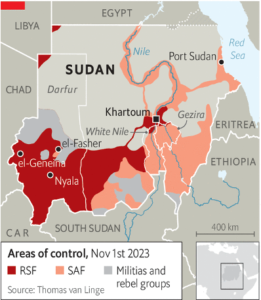 As the Israel – Hamas conflict dominated the headlines, the civil war in Sudan between the Sudanese Armed Forces (SAF) and Rapid Support Force (RSF) receded from the front pages. Sporadic coverage of the hostilities in that country, particularly in the western Darfur region spoke of RSF making gains resulting in a mounting death toll and 6.3 mn refugees due to the threat of genocide. SAF leader Gen. Abdel Fattah al-Burhan was forced to relocate his headquarters from Khartoum to Port Sudan as RSF, reportedly buoyed by the UAE’s military assistance via Chad and Libya, made headway in the capital. SAF was episodically supported by Egypt and Saudi Arabia. Virtually no peace talks either through IGAD or through the US-Saudi mechanism could be held during the month under review raising the prospects of a Libya-type de facto division of the country, Africa’s third largest by area. (Further Reading: “A genocidal militia is winning the war in Sudan” The Economist Nov 16.)
As the Israel – Hamas conflict dominated the headlines, the civil war in Sudan between the Sudanese Armed Forces (SAF) and Rapid Support Force (RSF) receded from the front pages. Sporadic coverage of the hostilities in that country, particularly in the western Darfur region spoke of RSF making gains resulting in a mounting death toll and 6.3 mn refugees due to the threat of genocide. SAF leader Gen. Abdel Fattah al-Burhan was forced to relocate his headquarters from Khartoum to Port Sudan as RSF, reportedly buoyed by the UAE’s military assistance via Chad and Libya, made headway in the capital. SAF was episodically supported by Egypt and Saudi Arabia. Virtually no peace talks either through IGAD or through the US-Saudi mechanism could be held during the month under review raising the prospects of a Libya-type de facto division of the country, Africa’s third largest by area. (Further Reading: “A genocidal militia is winning the war in Sudan” The Economist Nov 16.)
Yemen:
During the month under review, al-Houthi militia in northern Yemen expanded its military operations against Israel for pursuing a war against Hamas in Gaza. It continued to launch drones and missiles against targets in Israel. While most of them were shot down by the US and other Western naval ships deployed in the Red Sea, at least one drone succeeded in hitting a civilian building in Eilat on Nov 9. On Nov19-20, al-Houthi forces seized Galaxy Leader, a commercial ship in the Red Sea, allegedly owned by an Israeli company, and took it to Hodeidah port. The militia continue to harass commercial shipping in Baab al-Mandeb – Red Sea raising the spectre about navigational freedom through a choke point which 12% of global shipping passes. On Nov 21, the US said that it was reviewing the possible designation of the al-Houthis as a terrorist outfit. On Nov 28 the US warned vessel operators to be extra careful when navigating the Yemen and Somalia region.
Israel
On Nov 28, Israel’s government passed a revised 2023 budget that retains discretionary spending for religious schools and other priorities sought by the extreme right-wing coalition partners, despite warnings that doing so would burden the economy as the nation presses its war against Hamas. Despite his coalition’s majority in Knesset, PM Binyamin Netanyahu continued to lose popularity with an opinion poll published on Nov 4 disclosing that over 75% wanted him to resign.
Alongside its campaign against Hamas in Gaza, Israel continued with its iron hand policy in the occupied West Bank with the Jewish settlers also being on rampage against the Palestinians. Israel also decided to deduct the tax receipts of Gaza from those routinely transferred to the Palestine Authority.
On Nov 8, Brazilian authorities announced two arrests of an incipient Hezbollah cell.
Sri Lanka’s labour and foreign employment minister said on Nov 23 that more than 10,000 applications had been received to work on Israeli farms adding that are also looking at sending another 10,000 workers for the construction sector next.” The Sri Lankan workers will join some 9,000 compatriots already in Israel, working in farming and caring for the elderly. They would replace the workers from Palestine and Thailand.
Syria:
Israel air and missile attacks on Syrian targets continued during the month, hitting Damascus airport on Nov 26 and several military installations in Sweida province in southwestern Syria.
The US air force struck the IRGC and pro-Iranian militia targets in Syria on Nov 9 and Nov 13. These were in retaliation to the attacks by the pro-Iranian militias on the US military facilities in Syria and Iraq linked to the Israel-Hamas conflict.
Iraq:
The American support to Israel in its war against Hamas exposed the precarious nature of Iraq’s perch between neighbouring Iran and the US. The month under review saw more than 60 drone and rocket attacks on the US military and diplomatic establishments in Iraq and Syria. While no US personnel were killed, 59 were injured. Anthony Blinken, the US secretary of State visited Baghdad on Nov 5 to press Iraqi PM Mohammed Shia Sudani to crack down on the pro-Iranian Shia militias deemed responsible for these attacks. Iraqi PM’s attempt to persuade the motley Shia militias to shun these attacks was unsuccessful as they declared it to be their patriotic duty to do so to avenge the US support to Israel in its war against Hamas. For instance, Kataib Hezbollah, a prominent Iraqi Shia militia, said on Nov 19 that the attacks on the US military establishments in Iraq were meant to “drain the enemy.” PM al-Sudani’s follow-up visit to Tehran to plead with the Iranian leadership to rein in the recalcitrant militias was also infructuous as the hosts claimed that the militias made their own decisions and were not answerable to Iran. The US was unwilling to rock the Iraqi boat and responded to these attacks by air raids in Syria.
Bahrain:
On Nov 2, the elected parliament of Bahrain, which has no authority over foreign policy, issued an unusual statement saying the ambassadors of Israel and Bahrain had departed and economic ties had been cut. Israel responded that relations were stable and a subsequent statement by Bahrain’s government only mentioned the envoys had already left without clarifying any reason. It made no mention of the bilateral economic ties, which remain quite modest.
Jordan:
On Nov 16, the Jordanian foreign minister said that his country would not sign a deal to provide energy to Israel in exchange for water – an agreement that was to be ratified in October.
Jordanian authorities arranged two air drops of medical supplies on Nov 7 and 12 to their existing field hospital in Gaza, presumably in coordination with Israel, which had air dominance.
Oman:
US President Joe Biden spoke with Sultan Haithem bin Tareq on Nov 10, reportedly to dissuade Oman from giving military bases to China.
Saudi Arabia:
On Nov 28, Saudi Arabia introduced stricter visa rules for foreign domestic workers.
Lebanon:
On Nov 6, the visiting French defence minister declared that his country would provide some armoured vehicles to the Lebanese army.
Qatar:
Qatari Emir Sheikh Tamim bin Hamad visited Cairo on Nov 10 for a summit with President al-Sisi on the Gaza situation. The visit followed a meeting of Mossad and CIA Chiefs with the Qatari PM on the previous day in Doha. (Further Reading: “How Qatar swayed Israel and Hamas to make a truce work”, Reuters, Nov 30.)
Qatar discreetly played an important role in affecting a “humanitarian pause” between Israel and Hamas (many of its leaders being exiled in Qatar) and the exchange of Israeli and foreign hostages with Palestinian women and children in Israeli jails. The 4-day pause was followed up by two extensions of two days and a day. Over 110 Israeli and foreign hostages in Hamas custody and over 350 Palestinians were released.
On Nov 1, US President Joe Biden praised Qatar’s role in opening the Rafah border crossing between Gaza and Egypt for foreigners.
II) Economic Developments
Oil & Gas Related Developments:
Global Issues:
The 28th session of the Conference of the Parties (COP28) to the UN Framework Convention on Climate began in Dubai on Nov 30 with UAE’s Dr Sultan Ahmed Al Jaber as President. While the UAE pulled out all stops to ensure its success, the conference, being held for the first time in an OPEC member country with its President also the Chairman of ADNOC its national oil company were both in the crosswires of the environment NGOs as the fossil fuel villains with conflict of interest with the conference agenda. It did not help that three days before the conference was to begin the BBC revealed that the UAE presidency planned to use the side discussions with various countries to make bilateral oil deals. This created a humongous uproar among the NGOs ever suspicious of the machinations of the Big Oil. It was also pointed out that in terms of per capita energy usage, the Gulf oil producers had the dubious distinction of being most profligate with Qatar ranking highest in the world, followed by Bahrain at No. 4, the UAE at No. 5 and Saudi Arabia at No. 14. In his inaugural address the UAE President Mohammed bin Zayed Al-Nahyan announced a $30 bn climate fund, dubbed “Alterra” that aims to attract $250 bn of investment by the end of the decade. In the run-up to COP28, the UAE announced a pilot carbon capture project and launched green bond sales worth $14.6 bn.
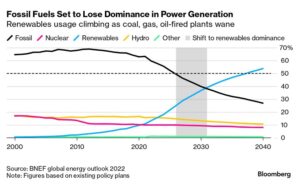
Oil prices ended the month with Brent crude futures trading at $2.83 a barrel, down 5.2% during November despite geopolitical uncertainty about the Israel-Hamas War and shipping disruptions in the Red Sea.
The OPEC+ virtual meeting scheduled for Nov 27 had to be postponed by three days to sort out differences on the level of collective production cuts as several African producers were reluctant to cut production. When the meeting was finally held on Nov 30, it decided to affect the collective production cut of 2.2 mbpd from January 1 2024 on a “voluntary basis”. Of this figure, Saudi Arabia was to roll over its ongoing cut of 1 mbpd and Russia to cut by 0.2 mbpd. The OPEC+ decision was counterintuitively followed by a 2% drop in the oil prices as the traders were expecting a higher quantum of cuts and were sceptical about even these cuts being realised. The OPEC head, in turn, accused the IEA of vilifying fossil fuel usage. (Further Reading: “An unruly OPEC is causing problems for Russia and Saudi Arabia”, The Economist, Nov 29.)
In its monthly report, OPEC said on Nov 13 that oil market fundamentals remained strong and blamed speculators for a drop in prices. It made a slight increase to its 2023 forecast for global oil demand growth and stuck to its relatively high 2024 prediction.
Bloomberg reported on Nov 14 that the total US crude output from the seven biggest shale regions would total 9.65 mbpd in December 2023 as the number of shale oil rigs rose by 6 to 500.
In an interview with the Financial Times on Nov 13, the chief executive of Baker Hughes said that the geopolitical risks are at their highest level in half a century
The proportion of electrical vehicles in the US was expected to rise to 9% in 2023 from 7.3% in 2022. For the first time, more than 1 mn EVs were sold this year. The proportion was 33% in China and over 90% in Norway. The growing use of EVs was expected to gather pace and significantly reduce oil usage.
Country Specific Developments:
Saudi Arabia, the world’s largest oil exporter, reported two new natural gas discoveries in the Empty Quarter on Nov 19. These were the Al-Hiran gas field with confirmed gas flow at a rate of 30 mn scf per day, and the Al-Mahakik gas field with confirmed gas flow at a rate of 0.85 mn scf. These and other discoveries would help Saudi Aramco realise its target of boosting its gas production by 50% by 2030 from 2021 levels. On Nov 9, Aramco decided to keep its $29 bn payout even as oil revenue fell due to lower prices and voluntary production cuts by the Kingdom.
Despite optimistic statements from both Iraqi and Turkish ministers of energy, the bilateral overland pipeline with 0.45 mbpd capacity could not resume operations during the month. These were halted on March 25 after an International Chamber of Commerce arbitration ruling.
A Reuters survey on Nov 10 found that Tehran’s October output edged up to 3.17 mbpd, the highest since 2018 when Washington re-imposed sanctions on Iran. China’s October imports from Iran are estimated to have reached around 1.45 mbpd, the highest monthly level ever.
Israel resumed the supply of natural gas to Egypt from the Leviathan offshore field on Nov 3 and from the Tamar offshore field on Nov 14. These resumptions ended the disruption in the supplies since the Gaza war.
On Nov 4, China Petroleum & Chemical Corporation signed a 27-year liquefied natural gas deal with QatarEnergy.
Following economy-related developments took place in WANA countries:
Bloomberg reported on Nov 24 that the US Committee on Foreign Investments (CFIUS) is reviewing several multibillion-dollar deals signed by Gulf-based sovereign wealth funds such as ADIA, Mubadala, PIF, etc. this year on concerns they could pose national security risks as these funds have begun large investments in China. The data compiled by Global SWF show that the value of acquisitions and investments by Gulf funds into China has climbed to $2.3 bn in 2023 from about $100 million last year. In comparison, they participated in US deals worth more than $23 bn. In recent months, Biden officials have expressed mounting concerns that critical technology, infrastructure and data that get to the UAE could potentially end up in the hands of Beijing. (Further Reading: “Mideast wealth funds draw greater US scrutiny over China ties”, Bloomberg Nov 24; and “The messier the world gets, the more the UAE seems to thrive” The Economist, Nov 23.)
On Nov 23, Saudi Arabia raised $11 bn through a syndicated loan as it looks to fund a budget deficit amid weaker oil revenues. On Nov 20 the central banks of Saudi Arabia and China signed a currency swap agreement worth 30 bn Yuan ($6.93 bn).
On Nov 23, Turkey’s central bank raised its interest rate by 500 bps to 40% to curb inflation currently running over 60% per annum.
Egypt’s annual inflation rate declined marginally to 35.8% in October from 38.0% in the previous month. On Nov 16, Egyptian authorities notched the biggest success of their privatisation program by selling 30% of their largest tobacco company for $625 mn. On Nov 3, Fitch downgraded the country to B- with a stable outlook.
The cost of running its war on Hamas began to impact the Israeli economy. On Nov 27, the Bank of Israel estimated the cost of the war at $53 bn. On Nov 13 its Finance Ministry disclosed that Israel raised about $7.8 billion in debt since the start of the war on Oct 7. Israel recorded a budget deficit of 22.9 bn shekels in October, a leap from 4.6 bn in September and pushing up the deficit over the prior 12 months to 2.6%. The Israeli accountant general denied a media report that the state would apply for a loan from the Bank of Israel for the first time since 1986.
III) Bilateral Developments
- Prime Minister Shri Narendra Modi began a two-day visit to Dubai on Nov 30 to participate in the UN Conference of Parties (COP28) on Climate Change. In his address to its opening ceremony on Friday, PM reiterated his call for a “just, inclusive and equitable” energy transition. He offered to host COP33 in 2028 when Asia gets its turn. India and the UAE co-hosted the high-level event on the Green Climate Programme (GCP) at COP-28. Although India is the world’s third-largest emitter, its per capita annual emissions of greenhouse gases at 2.29 tons is nearly a third of the global average of 6.3 tons. On the sidelines of the Dubai event PM also had bilateral meetings with several world leaders, including UAE President Mohamed bin Zayed Al-Nahyan (whom he invited for the Vibrant Gujarat Summit, to be held in January 2024) and Israeli President Isaac Herzog.
- Prime Minister Shri Narendra Modi remained actively engaged with the West Asian developments triggered by the Hamas-PIJ attack on southern Israel on Oct 7. He had tele-conversations with President Ibrahim Raisi of Iran (Nov 6) and President Mohammed bin Zayed Al-Nahyan of the UAE on Nov 3. Speaking at the e-inaugural session of the 2nd Voice of Global South Summit on Nov 17, PM Modi said, “We all are seeing that new challenges are emerging from the events in the West Asia region. India condemned the terrorist attack in Israel on October 7. We have exercised restraint as well. We have emphasized dialogue and diplomacy. We also strongly condemn the deaths of civilians in the conflict between Israel and Hamas.” (Further Reading: “Narendra Modi has shifted India from the Palestinians to Israel”, The Economist, Nov 2.)
- During the visit of Shri Dharmendra Pradhan, minister for education and skill development to the UAE, an agreement for long-term recruitment of skilled manpower was signed in Dubai on Nov 3 between NSDC International of India and World One, DP World’s subsidiary. Shri Pradhan also announced that CBSE India was to open a regional office in Dubai.
- Dr S. Jaishankar, minister for external affairs had a teleconversation on Nov 4 with Eli Cohen, his Israeli counterpart.
- On Nov 13, India voted in favour of the UN General Assembly resolution against Israeli settlements in occupied Palestinian territories.
- Bloomberg reported on Nov 2 that the UAE was considering investing as much as $50 bn in India. It cited unnamed sources that the UAE could announce provisional pledges to that effect early next year. (Further Reading: “Abu Dhabi weighs investment pledges worth $50 billion for India”, Bloomberg, Nov 02.)
- Bloomberg also reported on Nov 3 that during the visit of Saudi Crown Prince Mohammed bin Salman to India in September, his advisors proposed to the Indian government to invest as much as $5 bn into the Indian Premier League and help lead an expansion into other countries. Their proposal involved moving the IPL into a holding company valued at as much as $30 bn. (Further Reading: “Saudi Arabia eyes stake in $30 bln Indian Premier League – Bloomberg News” Reuters, Nov 3.)
- On Nov 3, the Economic Times quoted the executive chairman of the Bahrain-based investment firm Investcorp as having plans to increase its portfolio in India to as much as $5 bn over the next five years, from less than $1 bn today. The likely domains for new investment are private equity businesses and the expansion of its ongoing real estate business in adjacent sectors such as logistics and warehousing and education infrastructure.
- On Nov 30, Leading hospital chain Aster DM Healthcare Ltd on Tuesday said it will separate its mainstay Gulf business and sell it to its Indian promoters (Moopen family) and a Dubai consortium for $1.001 bn, in a move it said will unlock shareholder value and attract more institutional investors. After the deal, a consortium led by UAE government-backed Fajr Capital will own 65% of the Gulf entity, while Azad Moopen, the promoter of Aster, will own the remaining 35%.
- On Nov 24, a Qatari court accepted the appeal of 8 ex-Indian navy officers working for Dahra Global, a Doha-based private defence services provider, against their death sentence. Earlier on Nov 7, consular access was provided to them for the Indian embassy.
- Nimisha Priya, an Indian nurse has been on death row in a Sanaa jail for allegedly killing a Yemeni man. Her mother approached the Delhi Indian high court on Nov 17 to overturn the ban for Indian nationals from going to the Houthi-controlled territory to negotiate the blood money for her release.
- Indian nationals Lubna Nazil Shaboo and her daughter Karima were evacuated from Gaza on Nov 14 after considerable consular efforts.
- Qatar slapped a Rs 239 crore penalty on Larsen and Toubro of India for violation of its tax provisions.
- On Nov 6, India’s APEDA signed an MoU with the UAE-based Lulu group to jointly promote Indian agricultural products.
- During the month Indian teams played two football matches with WANA-based teams and managed to lose both. In a FIFA World Cup 2026 qualifier played in Bhubaneshwar on Nov 21, the Qatari national team defeated India 3-0. On Nov 6, in the AFC Champions League match, Al-Hilal club of Saudi Arabia scored a 2-0 win over the host Mumbai City team.


